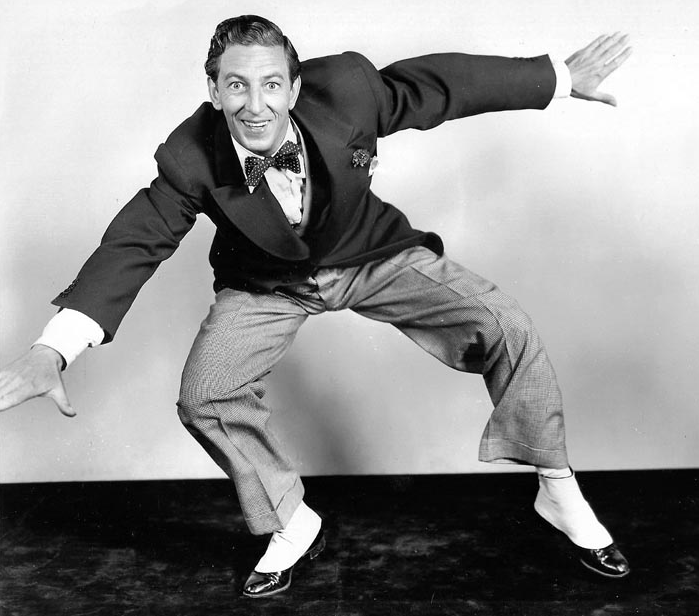I was recently wowed by a YouTube of Buddy Ebsen as an eccentric dancer. And another one with Earl “Snake Hips” Tucker. And another by Ray Bolger.

Buddly Ebsen
All these men were top-notch dancers, but they were weird, crazy, eccentric. They were even labeled “Eccentric Dancer.” They were not dreamboats like Gene Kelly or Fred Astaire but marginal objects of fascination.
However, if you look at their dancing in these clips, you’ll see astounding virtuosity and originality. They don’t do split-leap acrobatics like the Nicholas Brothers, but movements that are insanely specific to their bodies. Similar to the idea of traditional clown acts, they go deeply into who they are as individuals. They may look drunk, but what they are doing in their legs is extreme. It’s serious, soul-deep silliness.
For starters, take a look at the glorious goofiness of Buddy Ebsen in Born to Dance from 1936. His legs look too long for his body, and his knees seem to fold in the wrong direction — which make him all the more lovable.

Ray Bolger
We know Ray Bolger as the boneless scarecrow in The Wizard of Oz. He is perhaps the first proponent of release technique. But take a look at those legs in this amazing clip from The Harvey Girls (1946). He’s expertly wayward and the utmost in self-effacement. And yet it takes a superlative dancer to go that far off center. (By the way, he was Balanchine’s first tap dancer in On Your Toes in 1936.)

Earl “Snake Hips” Tucker
Earl “Snake Hips” Tucker (1905–1937) was one a famous act during the Harlem Renaissance. Also known as the “Human Boa Constrictor,” he acquired the nickname “snakehips” via the dance he performed in the 1920s. In this clip, you can see him collapse his hips, falling way over to the side. You can’t believe he could support himself…kind of like Lil Buck on his ankles.
OK, now take a look at Dick Van Dyke’s penguin dance from Mary Poppins (1964). He has hyperactive knees, rubber legs, and a blithely innocent face. (This clip has a sharper image but the wrong music has been overlaid.)
Closer to home for New Yorkers is Bill Irwin. He’s the Eccentric Dancer of our time, with a spectacular command of both clowning and tap dance. In this clip of Irwin’s own 1983 piece, Largely New York (after a Broadway-style intro by Angela Lansbury), you get a taste of these skills.

Ailey’s Samuel Lee Roberts in Naharin’s Minus 16, photo by Paul Kolnik.
I started thinking, Who else would be called Eccentric Dancers today? One answer came when I saw Ailey’s Samuel Lee Roberts in the opening solo in Ohad Naharin’s Minus 16 again. In this role he improvises as the audience files in after intermission, or, in the case of Fall for Dance, as a prelude to the rest of the piece. He’s been given instructions to play with the audience, and he does this in a delightfully legible way. As the curtain behind him slowly rises, he sinks underneath it and spreads out as though being pulled upstage. When the music changes, he suddenly pulls himself together, gets debonair, and dances really small. When he bounds in a circle around the stage, he lets us see how the bounding becomes twisting, then thudding. We’re with him. We laugh at his exploits. He’s not showing off; he’s showing us his story—or stories. Like a mime, or like a clown.
As we head into Thanksgiving, I give thanks for these crazified dancers; they don’t try to be exquisite or romantic or technically dazzling. But they are somethin’ wonderful, and I can watch these clips again and again.
Featured Uncategorized 2





